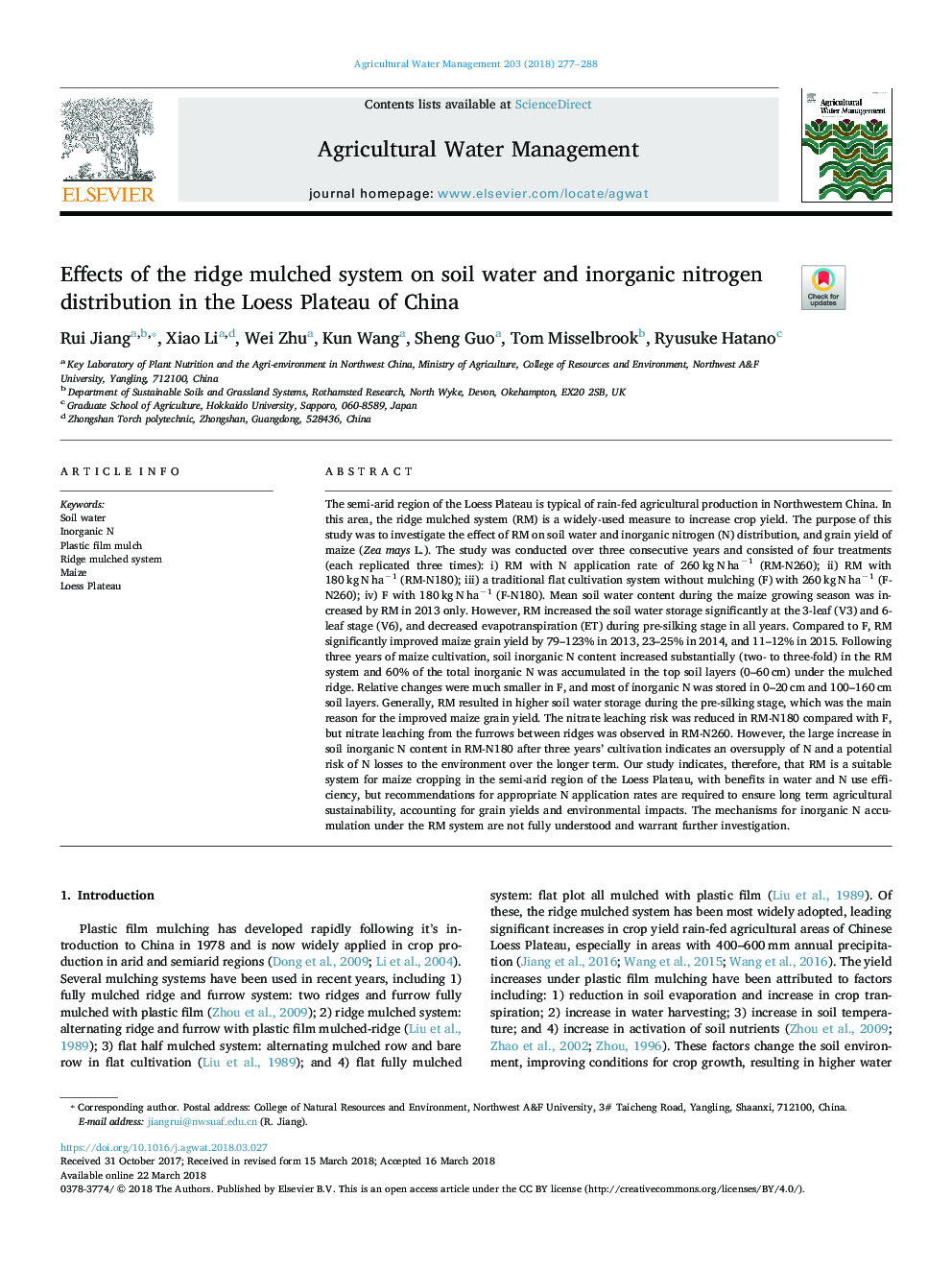| کد مقاله | کد نشریه | سال انتشار | مقاله انگلیسی | نسخه تمام متن |
|---|---|---|---|---|
| 8872967 | 1622877 | 2018 | 12 صفحه PDF | دانلود رایگان |
عنوان انگلیسی مقاله ISI
Effects of the ridge mulched system on soil water and inorganic nitrogen distribution in the Loess Plateau of China
ترجمه فارسی عنوان
اثرات سیستم آبشویی بر روی آب خاک و توزیع نیتروژن غیر آلی در ورقه لس در چین
دانلود مقاله + سفارش ترجمه
دانلود مقاله ISI انگلیسی
رایگان برای ایرانیان
کلمات کلیدی
موضوعات مرتبط
علوم زیستی و بیوفناوری
علوم کشاورزی و بیولوژیک
علوم زراعت و اصلاح نباتات
چکیده انگلیسی
The semi-arid region of the Loess Plateau is typical of rain-fed agricultural production in Northwestern China. In this area, the ridge mulched system (RM) is a widely-used measure to increase crop yield. The purpose of this study was to investigate the effect of RM on soil water and inorganic nitrogen (N) distribution, and grain yield of maize (Zea mays L.). The study was conducted over three consecutive years and consisted of four treatments (each replicated three times): i) RM with N application rate of 260â¯kgâ¯Nâ¯haâ1 (RM-N260); ii) RM with 180â¯kgâ¯Nâ¯haâ1 (RM-N180); iii) a traditional flat cultivation system without mulching (F) with 260â¯kgâ¯Nâ¯haâ1 (F-N260); iv) F with 180â¯kgâ¯Nâ¯haâ1 (F-N180). Mean soil water content during the maize growing season was increased by RM in 2013 only. However, RM increased the soil water storage significantly at the 3-leaf (V3) and 6-leaf stage (V6), and decreased evapotranspiration (ET) during pre-silking stage in all years. Compared to F, RM significantly improved maize grain yield by 79-123% in 2013, 23-25% in 2014, and 11-12% in 2015. Following three years of maize cultivation, soil inorganic N content increased substantially (two- to three-fold) in the RM system and 60% of the total inorganic N was accumulated in the top soil layers (0-60â¯cm) under the mulched ridge. Relative changes were much smaller in F, and most of inorganic N was stored in 0-20â¯cm and 100-160â¯cm soil layers. Generally, RM resulted in higher soil water storage during the pre-silking stage, which was the main reason for the improved maize grain yield. The nitrate leaching risk was reduced in RM-N180 compared with F, but nitrate leaching from the furrows between ridges was observed in RM-N260. However, the large increase in soil inorganic N content in RM-N180 after three years' cultivation indicates an oversupply of N and a potential risk of N losses to the environment over the longer term. Our study indicates, therefore, that RM is a suitable system for maize cropping in the semi-arid region of the Loess Plateau, with benefits in water and N use efficiency, but recommendations for appropriate N application rates are required to ensure long term agricultural sustainability, accounting for grain yields and environmental impacts. The mechanisms for inorganic N accumulation under the RM system are not fully understood and warrant further investigation.
ناشر
Database: Elsevier - ScienceDirect (ساینس دایرکت)
Journal: Agricultural Water Management - Volume 203, 30 April 2018, Pages 277-288
Journal: Agricultural Water Management - Volume 203, 30 April 2018, Pages 277-288
نویسندگان
Rui Jiang, Xiao Li, Wei Zhu, Kun Wang, Sheng Guo, Tom Misselbrook, Ryusuke Hatano,
